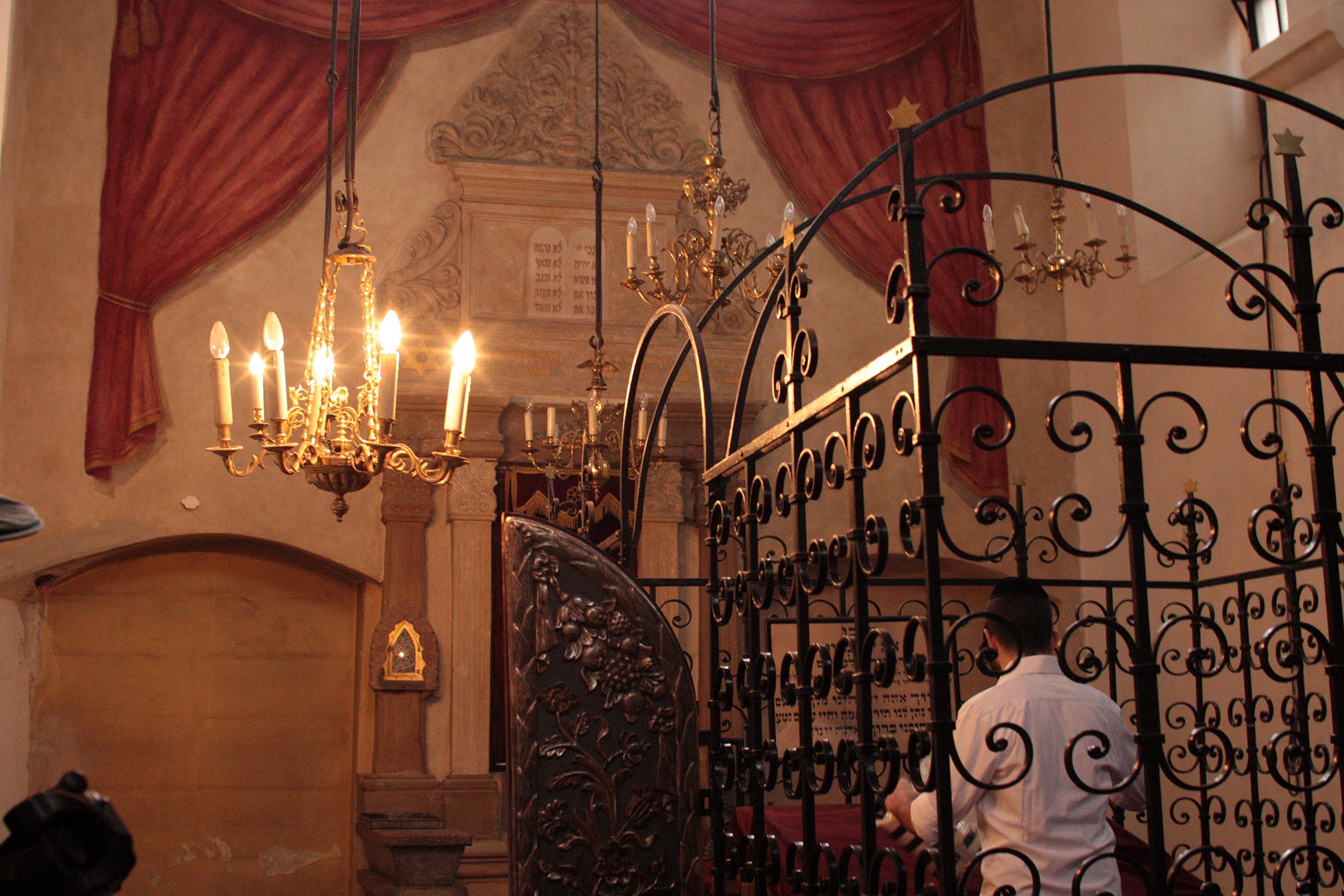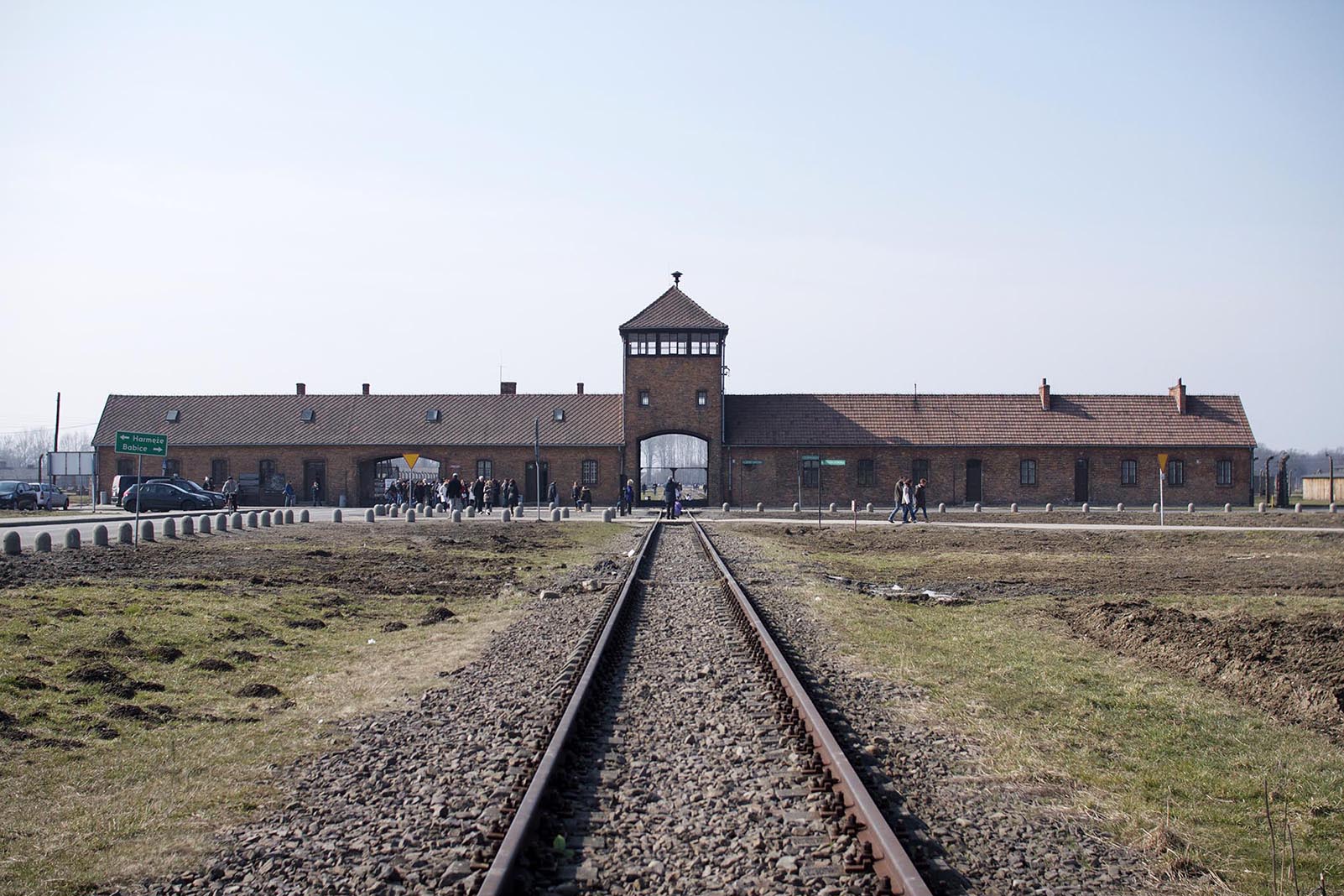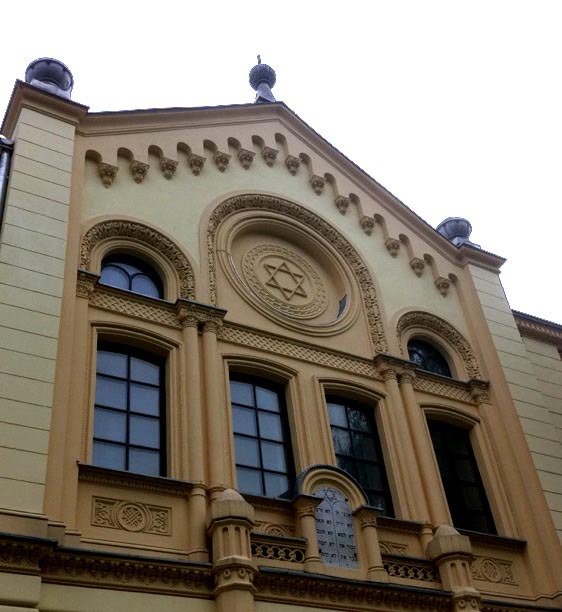Poland has a special place in history of European Jews. Since the 14th century Jewish emigration to the Polish kingdom formed the foundation of the bulk of Ashkenazi settlement in Europe. After the fall of Jewish communities in Spain, the Polish Kingdom, and later the Polish-Lithuanian Commonwealth, became the centre of Jewish culture in Europe, a country of illustrious rabbis, and famous yeshivas . Despite the wars in 17th century and the Cossack uprising the Jewish population grew and in interwar Poland there were 3 500 000 Jews. Most of them perished during The Holocaust and the majority of survivors emigrated during the post-war period.
Cracow

While Warsaw was almost destroyed during World War II, Cracow remained largely untouched with its historical centre, including Kazimierz district, where many synagogues and cemeteries remain, including The Old Jewish Cemetery with the graves of rabbi Moshe Isserles (Remo), Tosfot Yom Tov, Yoel ben Shmuel Sirkis (Bach), Nathan Note Spira (Megaleh Amukot) and many others. The tour includes also visit to the New Jewish Cemetery with the grave Shimon Sofer (descendant of Hatam Sofer) and also Ghetto Heroes square (place of deportation) with famous pharmacy „Under the Eagle“, owned by Tadeusz Pankiewicz (recognised as one of the ‚Righteous Among the Nations‘). This became an important centre of social life as well as a place to acquire food and medicine, falsified documents and avoid deportations. Today the building serves as one branch of Cracow Historical Museum. Among historical monuments there is also the building, where Sarah Schenirer founded her first Beis Yaakov (first school for Jewish women). Her grave stone is today in the former concentration camp Plaszow (connected with person of Oskar Schindler, whose factory in Cracow can be visited as well).
Auschwitz
Auschwitz was the largest Nazi extermination camp during World War II. It was actually complex of three main camps, Auschwitz I, the original concentration camp, Auschwitz II (Auschwitz-Birkenau), the death camp where Nazis killed at least 1.1 million Jews, 75 000 Poles, and about 19 000 Roma (gypsies), and Auschwitz III Monowitz, a labor camp. In 1947 the Polish government established a memorial and museum in the area of Auschwitz I and Auschwitz-Birkenau, which is visited by more than 1 million people per year.
Polish Galicia
Galicia is a historic region in eastern Europe, today divided between Poland and Ukraine. Before World War II it was one of the centres of Ashkenazic Jewish culture. There are many famous places connected with the hassidic movement and rebbes of famous dynasties, like Lizhensk (ליזשענסק), Lancut (לאַנצוט), Rymanow (רימאנאוו), Bobowa (באבאוו), Tarnow (טארנא, Torna), Nowy Sącz (צאנז, Tzanz) and many others.
Warsaw and Lublin
Before World War II Jews comprised forty percent of Warsaw’s population. Today only few hundred of registered Jews remain and the Jewish Community in Warsaw is united with the Jewish community of Lublin. There is a Jewish museum, synagogue and large Jewish cemetery in Warsaw, a memorial to the Warsaw Ghetto uprising, and a reconstructed Old Town. The tour can include a trip to Gora Kalwaria (Gur), home of the Gur hassidic dynasty.
In Lublin (לובלין), currently the 9th largest city in Poland, you can visit renewed Yeshivas Hahmei Lublin as well as the graves of famous Admorim Maharshal (Rabbi Shlomo Luria) and Yaakov Yitzhok Horowitz (Seer of Lublin).
Treblinka
One of the deadliest Nazi extermination camps is located near the village of Treblinka north-east of Warsaw. The camp operated between 1942 and 1943 as part of Operation Reinhard, focused on extermination of Polish Jewry. During this time, between 700 000 and 900 000 Jews were killed in its gas chambers. There is a museum and the new exhibition centre located at the camp opened in 2006.
Majdanek
Majdanek was a Nazi concentration and extermination camp located on the outskirts of city Lublin. Originally intended to be a forced labor camp, Majdanek became an extermination camp during Operation Reinhard. The camp operated from 1941 until 1944 and it was captured nearly intact because the rapid advance of the Soviet Army. It remains the best preserved Nazi concentration camp of the Holocaust. It was the first major concentration camp liberated by Allies and a memorial was established at the place of the camp already in 1944.


